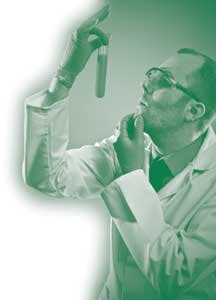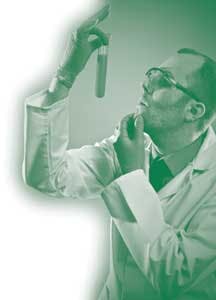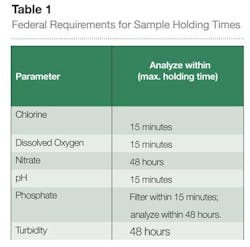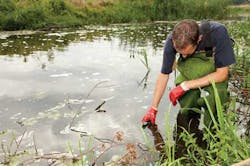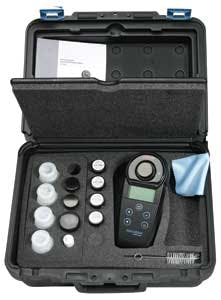By Ricki Hartwell
Few stereotypes are as iconic as a dour scientist in a lab coat staring intently at an Erlenmeyer flask trying to uncover the secrets of what's inside. But while laboratory work is critical in the field of water and wastewater (WW) treatment, a good deal of data measurement occurs away from the confines of research facilities. Examples of field testing include water quality monitoring, source water testing, aquaculture water quality control, water treatment plant distribution systems, and various locations at wastewater treatment plants. That's where equipment specifically built for use in the field can help organizations and municipalities save money, improve water quality and maximize the accuracy and speed of their data collection.
Field testing is important because it gives analysts the ability to take real-time readings at the sample location instead of collecting and transporting a sample back to the lab, which can cause inaccuracy in reported readings due to temperature changes, sample aeration, preservation, contamination, and additional potential handling errors. Field testing is also often more efficient because results can be obtained quickly by a single analyst and will be truly representative of the sample in-situ. Results can then be either manually logged in a notebook or saved to the instrument's data log and downloaded later. Any way you look at it, having mobile capabilities is better, faster and cheaper for many kinds of testing.
Choosing a hybrid mobile/lab monitoring approach is the easy part - making it work is a lot more challenging because it requires the right equipment that analysts are able to apply in the field. As a first step, water system administrators need to decide what they want to test.
Two common field tests are for ammonia (e.g., water quality and aquaculture) and chlorine (for water distribution systems and wastewater treatment), both of which can dissipate over time and therefore benefit significantly from immediate readings rather than from delayed lab results (lab analysis is also important, which is why mobile and static tools should be used in tandem depending on use). Other tests that can easily occur in the field are pH, conductivity, turbidity and oxygen content. Again, these can also be tested in the lab, but changes in temperature can significantly alter results and ultimately provide inaccurate or incomplete information.
So what type of equipment should water scientists use in the field? There are myriad choices, but a basic field testing kit should include the following:
- Colorimeters to measure the concentration of a water sample's components using light passing through the sample, which has been reacted to give a colored species
- Turbidity meters to determine the clarity (or cloudiness) of a sample using a light source to see particulates floating in the sample
- pH meters to measure the pH of drinking water, surface/groundwater and wastewater to ensure quality and compliance of regulatory requirements
- Dissolved oxygen meters to determine oxygen availability as an essential part of water pollution control and monitoring
- Conductivity meters to provide a fast, easy way to determine the total amount of ions in solution
Of course, having the right tools for the job involves more than just function. After all, no one wants to carry a 60-pound instrument deep into the woods and try to dip it in a river. Mobile gear needs to be light enough to carry, durable enough to withstand jostling during transportation and waterproof so that it will still function properly after being submerged. We recommend that all field-based equipment should have an Ingress Protection (IP) number of 67, meaning that it is totally impervious to dust and is also protected against the effect of immersion in water between 15 cm and one meter deep.
Hard-carrying cases are essential for a lot of gear, but even the best protection can't prevent all breakage. That's why mobile gear should be easy to restore to working condition utilizing replacement components that can be quickly swapped to replace damaged ones. Meter and sensor systems allow either component to be replaced as needed without having to dispose of the entire system and offer the ability to quickly restore malfunctioning equipment in order to save time and costs.
Another key element to consider is reporting. Data collected in the field can be recorded and returned to the lab, but thanks to technology advances in recent years, it is now possible for large amounts of data to be captured and stored electronically in situ or in the field and downloaded back in the lab for analysis. This removes one of the key biases against non-lab information gathering because collating and reporting field-tested levels can be expedited.
There is no one single approach to field testing, but having the right gear can make data collection, reporting and analysis just as easy to accomplish outside of the office as it is in the lab. As water systems face increasing pressure to improve quality while reducing costs, having a full complement of mobile testing gear could very well be the best way to achieve both.
About the Author: Ricki Hartwell is product line manager for water analysis instruments at Thermo Fisher Scientific. She can be reached at [email protected].
